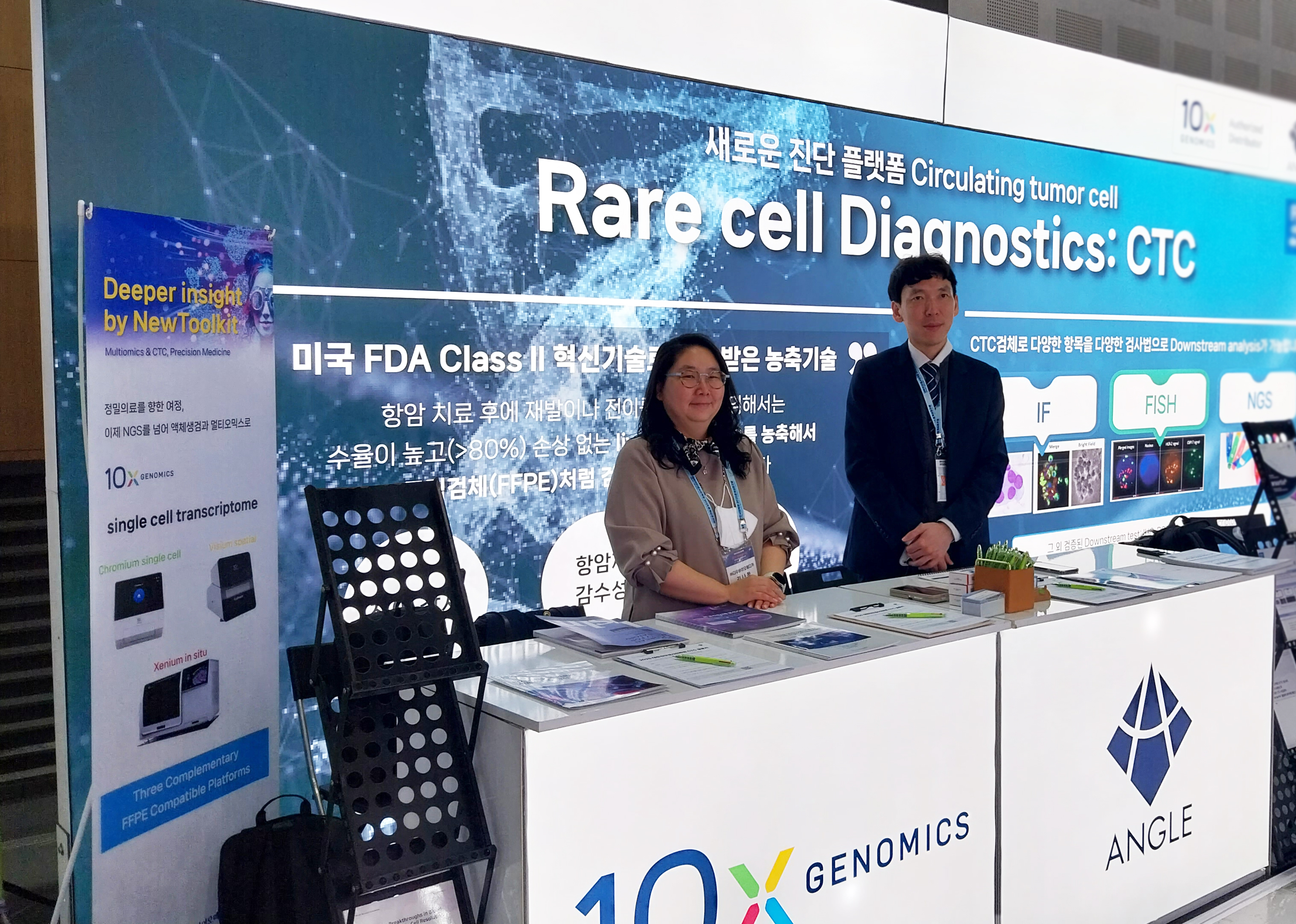Dowbiomedica introduce CTC Testing at the KSLM Conference
- 등록일 : 2025-04-17
지난 4월 3일 다우바이오메디카는 최근 경주 컨벤션 센터에서 진행한 대한진단검사의학회 춘계학술대회에서 순환종양세포(CTC) 검사법을 소개했다고 밝혔다.
순환종양세포(CTC: Circulating Tumor Cell, 이하 CTC)는 암세포로부터 떨어져 나온 세포로서 혈액 중에서 발견되며 암전이의 주범으로 알려져 있다. 암진단은 원칙적으로 조직검사를 통해 확인되는데, 암종에 따라서는 암으로 의심되어도 조직검사에서 음성으로 나오는 경우가 있다. 조직검사 결과가 음성으로 나오는 경우 치료 시점에 혼란을 줄 수 있어 보조 진단 도구의 필요성이 제기되고 있다.
예를 들면, 전립선암의 경우 혈액검사와 영상검사에서 전립선암으로 의심 되어도 조직검사에서 음성으로 나올 가능성이 최대 15%이다. 조직검사의 한계를 보완하기 위한 보조적 도구로 CTC의 임상적 활용 가능성에 대한 연구가 활발히 진행되고 있다.
또한 암치료를 하는 동안 재발이나 전이가 의심되는 경우 또 다시 조직을 채취해야 하는데, 폐암, 난소암, 뇌암 등은 조직 접근이 어렵고 채취를 해도 암의 이질성 때문에 위음성이 나오는 경우가 있다.
순환종양세포는 이런 경우 대안이 될 수 있다. 이번 대한진단검사의학회에서 소개한 CTC 검사 기술은 기존 검사법이 일부 특정 암세포만 검출할 수 있다는 제한점을 해결하고 물리적 포획장치를 고안해 온전한 CTC(Intact CTC)를 농축할 수 있다는 장점이 있어 다양한 연구사례에 활용되고 있다.
다우바이오메디카 관계자는 "암 치료 중 정확한 모니터링을 할 수 있는 것이 무엇보다 중요하다"며 "온전한 상태로 분리된 CTC는 치료 예후를 판단하거나 항암제 감수성 검사, 암 재발 및 전이감시, 신약 개발 등에 활용될 수 있어 신기술에 대한 이목이 집중되고 있다"고 말했다.

Dow Biomedica Presents Circulating Tumor Cell (CTC) Technology at the Korean Society for Laboratory Medicine Spring Conference
Rising demand for complementary diagnostics due to limitations of tissue biopsy
CTC enables detection in cancers with limited tissue accessibility
Applicable in recurrence monitoring, drug response prediction, and beyond
Dow Biomedica recently showcased its Circulating Tumor Cell (CTC) testing technology at the Spring Scientific Conference of the Korean Society for Laboratory Medicine (KSLM), held on April 3 at the Gyeongju Convention Center.
CTCs—cells shed by primary tumors into the bloodstream—are known contributors to cancer metastasis. While histopathological confirmation via tissue biopsy remains the gold standard in cancer diagnosis, certain cancer types can yield false negatives in biopsy, despite clinical or radiological suspicion. This gap is driving interest in supplementary diagnostic tools such as CTC analysis.
For instance, up to 15% of prostate cancer cases may return negative biopsy results even when blood tests and imaging suggest malignancy. CTC testing is emerging as a valuable complementary approach to address such diagnostic limitations.
In addition, cancers such as lung, ovarian, and brain cancers often pose challenges in tissue accessibility. Even when tissue is successfully sampled, tumor heterogeneity can result in false negatives. In these contexts, CTC analysis offers a less invasive and potentially more comprehensive alternative.
The CTC platform introduced by Dow Biomedica addresses previous limitations of conventional detection methods, which could only capture specific cancer cell types. By employing a novel physical enrichment device, the technology enables the isolation of intact CTCs, facilitating downstream applications and research.
A Dow Biomedica representative stated,“Accurate monitoring during cancer treatment is essential. Intact CTCs obtained through our platform can be used to assess prognosis, guide anti-cancer drug sensitivity testing, track recurrence or metastasis, and support new drug development. This breakthrough is garnering significant attention in the oncology field.”
CTC technology continues to expand its clinical and research applications as a non-invasive, yet highly informative, diagnostic alternative.


